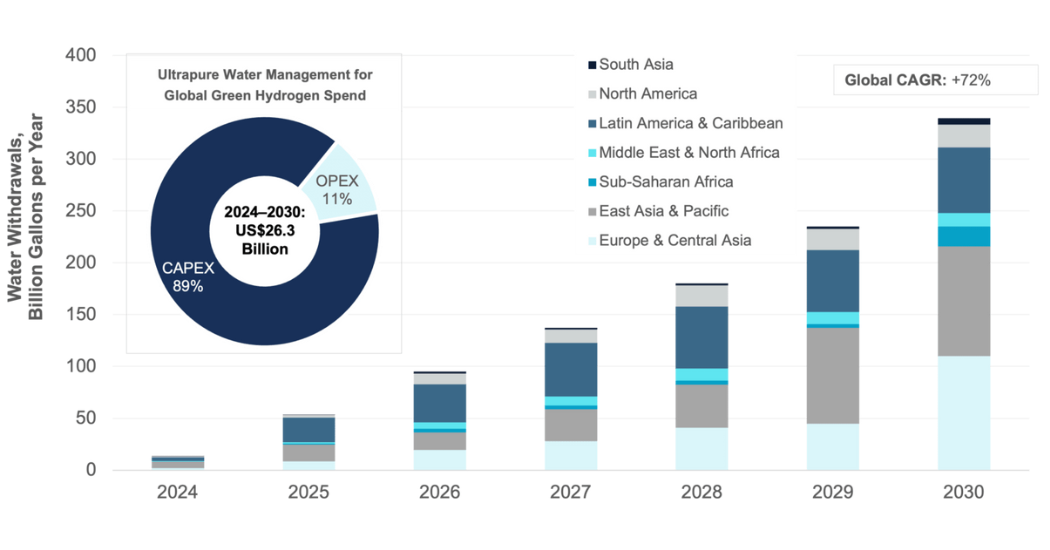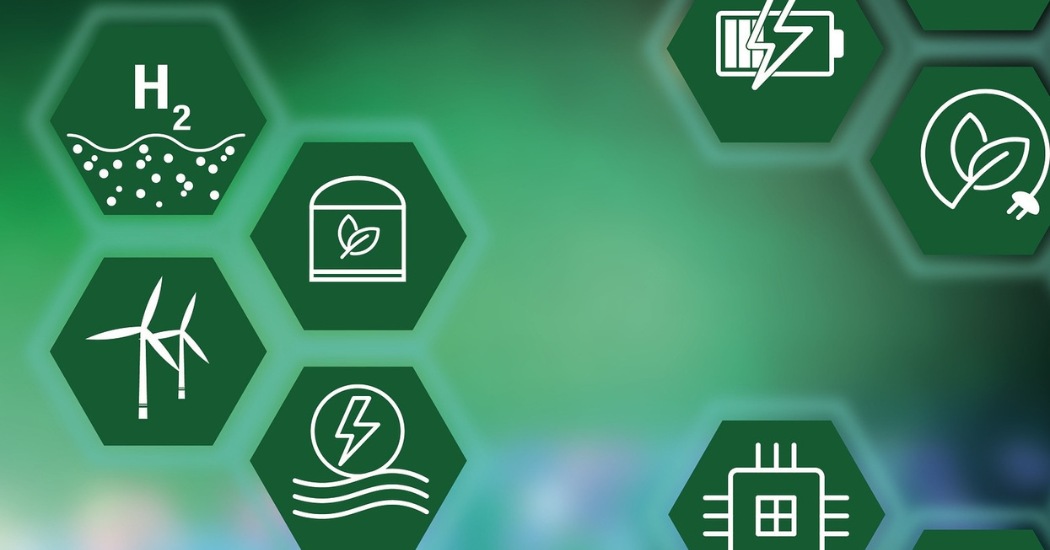Green hydrogen, a clean fuel with applications for the industrial, power, and transportation sectors, has emerged as a key focal point of the global energy transition and is driving opportunities for companies across the water industry, according to a new report from Bluefield Research, The Hydrogen Economy: Water Demand, Management Strategies, and Global Forecasts, 2024–2030.
Through 2030, US$26.3 billion will be spent on water management (i.e., CAPEX, OPEX) for hydrogen applications, according to Bluefield’s global forecasts. “The scale and success of the hydrogen market also depends on the sometimes-overlooked availability of water supplies,” says Bluefield President and CEO Reese Tisdale. “We would certainly expect to see increasing investment in water reuse (i.e., reclaimed wastewater), brackish and seawater desalination, and municipal utility infrastructure to meet scaling water demand, globally.”
The nascent hydrogen sector is experiencing unprecedented momentum shaped by new policies, financial incentives, and project developer interests. To date, 30 countries have developed hydrogen strategies and roadmaps with almost 2,000 projects announced on every continent, according to Bluefield’s report. “Whether it be the Inflation Reduction Act in the U.S., the EU’s regulatory framework for achieving its green hydrogen production goal, China’s five-year plan highlighting green development, Japan’s investment in fuel cells, or Australia’s goal to be a renewable energy exporter, hydrogen investment and interest is at an all-time high.” says Tisdale.
Exhibit: Planned Green Hydrogen Global Water Withdrawals by Region, 2024–2030

Note: ‘Undisclosed’ hydrogen colors not included in outlook
Source: Bluefield Research
Highly treated ultrapure water is the critical input for producing green hydrogen that can serve a wide range of applications including power (i.e., energy storage), transportation (i.e., shipping, truck fleets), and industrial inputs (e.g., fertilizer, steel). For this reason, water resource availability is a crucial issue in hydrogen production. In fact, 63% percent of the hydrogen project development is taking place in regions of water stress.
“If completed, the total number of projects would require 598 billion gallons of water per year in 2030. That is enough water to serve the population of New York City for a year,” according to Tisdale. The estimated water volume demand for the current green hydrogen project pipeline is forecasted to scale at a 72% compound annual growth rate (CAGR) from 2024 through 2030. This number could climb over time as the green hydrogen project pipeline builds in the U.S. For all of this to happen, hydrogen electrolyzer technology suppliers must advance in scale and costs must decline for the sector to take off.
The success of hydrogen will hinge largely on the success of leading renewable and energy players like Iberdrola, NextEra, Air Liquide, Chevron, and Shell. In their wake, leading water solutions providers, like Ecolab, Veolia, Xylem, and Acciona, among others, stand to benefit from the demand for more advanced water treatment, reuse, and desalination. Similarly, a host of engineering and construction companies, oftentimes referred to as the gatekeepers to water infrastructure development, are already playing key roles.
“Green hydrogen cannot exist without water, and there are so many implications for the water sector if green hydrogen takes off as a fuel of choice,” says Tisdale. “The key is for the industry to seize on this momentum and proactively consider the opportunities for more advanced water management.”
About this Report
Bluefield’s Insight Report offers an in-depth analysis of the potential implications through the growing hydrogen economy on global water demand, management strategies, and market forecasts. Access this report here. Bluefield clients also have access to the Global Hydrogen Forecast dashboard on Bluefield’s Data Navigator platform. Not a Bluefield client? This report is available for purchase using the same link above.
Originally published by Bluefield Research.




